
0807 794 3514, 0703 668 1104


INDEMNITY CLAUSE IN LAND TRANSACTIONS – ITS RELEVANCE
By omonilelawyer | january 20, 2019 | 3,158 | 0.
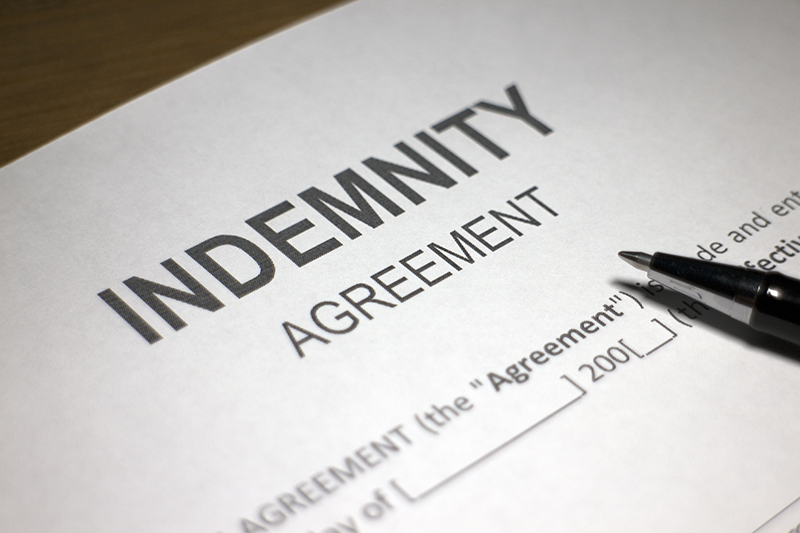
In legal circles, the word " indemnity " is used in contracts. It means recompense for any loss or liability which one person has incurred . It has been defined as an obligation undertaken by a person called the indemnitor/indemnifier to provide compensation for a particular loss suffered by another person called the indemnitee/indemnity holder.
A claim to an indemnity can arise by either by operation of law or by contract . It must also be noted that an indemnity can be made subject to the rules of damages. The indemnifier bears the primary obligation with regard to the amount of the indemnity.
This means that, even if the underlying transaction is set aside for any reason, the indemnity will remain valid. Overtime there have been several propositions as to the nature of a contractual indemnity. These propositions include:
That an indemnity against “loss” may by nature apply to loss occasioned by financial damage or loss of or damage to physical property. under certain contracts, the indemnity may refer to loss suffered as a consequence of a third party making a claim against the beneficiary of the indemnity.
By nature, liability pursuant to an indemnity will only exist in respect of an ascertained amount, but an action may be brought under an indemnity prior to the ascertainment of liability. accordingly the obligation to indemnify may arise prior to when any loss or damage has been suffered by the beneficiary.
Indemnities are contractual in nature and must therefore be supported by consideration, unless contained in the form of a deed.
The benefits of an indemnity clause as a mechanism for a negotiated compensation include the following:
The measure of compensation is indemnification which may be greater than damages for breach of contract.
Proof of damages may be more difficult than proving “out of pocket” losses and expenses for indemnification
Mitigation of loss probably does not apply in indemnities
Remoteness of damage issues ought not apply; and
In indemnities risk can be transferred.
In property transactions, maximum risk is carried by the buyer because upon sale, ownership including unknown risk and liability is passed from the seller to the buyer. A lot of properties in the metro cities are under litigation which have been ongoing for decades due to common reasons such as:
The property being transferred was under force, influence or coercion; or
The legal heirs of the sellers claim their right to the property.
In such case, the indemnity clause in the sale agreement protects the buyer against any legal dispute or defect in the property or in the title to be transferred and compensate him for any loss incurred.
The indemnity clause is inserted in the sale agreement as a matter of precaution by the buyer against the seller in order to safeguard his interest in respect of any future claims by any third party or the revenue against the said property. It also takes care of unknown liabilities and strengthens the agreement as you know your liability limitation.
Indemnity clauses are common in contracts and purchase receipts which are often buried deep in small prints in the form or document. It is also rarely discussed or negotiated by parties unless the parties to the contract are represented by their lawyers to review the contract on their behalf.
The non-inclusion of the indemnity clause exposes business to known and unknown risks according to the terms of the contract.
Omonile Lawyer in your inbox
Subscribe to Omonile Lawyer's Newsletter and stay up to date with more great news and articles like this one
WRITTEN BY: OmonileLawyer
Hey, I'm the Omonile Lawyer. Do you want expert verification on that new land? Contact me now!
Related Post

Ngozi’s Sangotedo ₦45,000,000 Apartment Scam Nightmare Unveiled!-Learn from her Experience

Beware-A Contract of sale is not a good title. Don’t be fooled

8 Lies dubious Lagos Land Scammers convince Nigerians to buy a fake land

Beware of buying an Excision in process land in Ibeju Lekki. Its a Scam

Stop Lagos Land Scammers Now. They are Everywhere. Don’t be their Next Victim
No comments, leave a comment cancel reply.

- Tour Solutions Resources Pricing
- Contact Sales
- START FREE TRIAL
- All Industries >

Understanding the Basics of Deed of Indemnity: A Comprehensive Guide

Holding a role in a company as its director comes with a lot of responsibilities and risks . This is why you must know how to protect yourself with the help of a deed of indemnity, especially if the company is owned by more than one person.
This article will teach you how to create a deed of indemnity and the many ways it can help you.
Table of Contents
Components of a Standard Deed of Indemnity
When you’re drafting a deed of indemnity , it’s important that you include these essential elements:
1. Definition and scope
The deed should have a clear definition for every key term used. This includes the liability, claim, and company.
As for the coverage, you should choose a deed that can provide unlimited coverage. This means that you will continue to be protected even if you are no longer a director in the company.
2. Indemnity clause
This section in the document should outline the extent wherein you will be covered by the company as its director. Standard indemnity clauses usually indemnified directors to “the maximum extent permitted by law.” What this means is that there are circumstances wherein clauses will exclude indemnity, such as criminal, dishonest, and fraudulent behavior.
If you are writing a deed, be clear on how you wish to be covered by the company. Include information on legal costs and who will be paying these.
3. Document access
It’s also important that you include document access in your deed of indemnity. This ensures that you will continue to have access to important company documents, especially if you need them for any court proceedings.
4. Insurance
Directors and officers have a separate insurance from the company. The deed will make sure that the D&O insurance will maintained and paid for by the company.
5. Extra Protections
You can also get protection if the company you work for is part of a larger group. The parent company may be able to guarantee your indemnity and help protect you if you face risks or penalties as the director.
Download the Deed of Indemnity Form
Below is a preview of Deed of Indemnity Form . Use this form for free when you sign up for a Fill account.

Deed of Indemnity
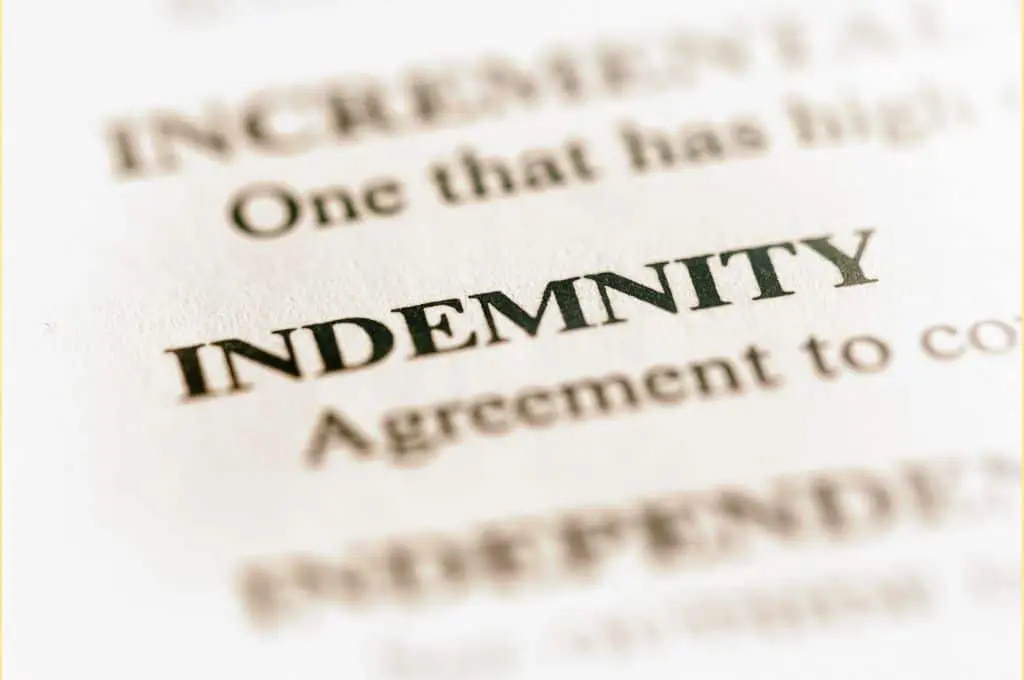
Best Strategies When Drafting A Deed of Indemnity
In the process of a deed of indemnity creation, there are some things that can help you create a strong deed. Here are some tips that you should remember when writing your deed:
- Have a thorough understanding of the agreement – As with any contract , it’s important that you have a comprehensive understanding of the agreement or the transaction. Learn about its potential risks, losses, and liabilities so you can find a way to cover them.
- Customize the indemnity provision – Tailor the provision according to your specific needs and circumstances. This will allow you to get thoroughly protection and a way to allocate the risks.
- Specify any indemnifiable event – Be clear in your deed and identify the circumstances or events that may trigger the indemnity obligation. You might want to use a non-exhaustive list of specific events so that any unforeseen situations may still be covered.
- Have a lawyer review the deed – When you are writing your deed of indemnity on your own, it’s best that you have a lawyer review it. This will ensure that the document can fully protect you as the director of the company.
Utilizing Fill For Your Deed of Indemnity
If you are trying to learn how to write a deed of indemnity and you do not have a lawyer who can help you out, you can use Fill’s ready-made template. This will save you time and money in trying to draft your deed of indemnity.
Sign up for free today to check out the different templates available on our website.
Manage contracts, forms and eSignatures effortlessly.
Related Stories

How to Write Form 8453: A Quick Guide for Taxpayers
We provide a definitive guide on IRS Form 8453. Read tips on how to draft form 8453 IRS and the steps for filling it out correctly.

How To Draft A Mobile App Design Proposal and Win New Clients
For any app developer, landing a client can make or break the business. However, before you can land clients, you will need to learn how to create a mobile app design proposal. But writing one can be a struggle, especially since your proposal needs to win over potential clients. This is where we come into the picture. You'll also be able to remotely sign documents and collaborate with potential clients when you're done. Here's what you need to know.
How To Write A Change Order Form: Use Our Free Template
A change order form is an essential document in the realm of construction, project management, and contractual work. Whether you're modifying the scope, cost, or timeline of a project, a well-crafted form protects all parties involved and ensures a smooth transition from the original plan. In this guide, we'll walk you through how to draft change order forms that are both precise and legally sound.
Get great articles direct to your inbox
We’ll never share your details with third parties. View our Privacy Policy for more info.
This feature is currently only available from a desktop computer.
Deed of Assignment: Everything You Need to Know
A deed of assignment refers to a legal document that records the transfer of ownership of a real estate property from one party to another. 3 min read updated on January 01, 2024
Updated October 8,2020:
A deed of assignment refers to a legal document that records the transfer of ownership of a real estate property from one party to another. It states that a specific piece of property will belong to the assignee and no longer belong to the assignor starting from a specified date. In order to be valid, a deed of assignment must contain certain types of information and meet a number of requirements.
What Is an Assignment?
An assignment is similar to an outright transfer, but it is slightly different. It takes place when one of two parties who have entered into a contract decides to transfer all of his or her rights and obligations to a third party and completely remove himself or herself from the contract.
Also called the assignee, the third party effectively replaces the former contracting party and consequently assumes all of his or her rights and obligations. Unless it is stated in the original contract, both parties to the initial contract are typically required to express approval of an assignment before it can occur. When you sell a piece of property, you are making an assignment of it to the buyer through the paperwork you sign at closing.
What Is a Deed of Assignment?
A deed of assignment refers to a legal document that facilitates the legal transfer of ownership of real estate property. It is an important document that must be securely stored at all times, especially in the case of real estate.
In general, this document can be described as a document that is drafted and signed to promise or guarantee the transfer of ownership of a real estate property on a specified date. In other words, it serves as the evidence of the transfer of ownership of the property, with the stipulation that there is a certain timeframe in which actual ownership will begin.
The deed of assignment is the main document between the seller and buyer that proves ownership in favor of the seller. The party who is transferring his or her rights to the property is known as the “assignor,” while the party who is receiving the rights is called the “assignee.”
A deed of assignment is required in many different situations, the most common of which is the transfer of ownership of a property. For example, a developer of a new house has to sign a deed of assignment with a buyer, stating that the house will belong to him or her on a certain date. Nevertheless, the buyer may want to sell the house to someone else in the future, which will also require the signing of a deed of assignment.
This document is necessary because it serves as a temporary title deed in the event that the actual title deed for the house has not been issued. For every piece of property that will be sold before the issuance of a title deed, a deed of assignment will be required.
Requirements for a Deed of Assignment
In order to be legally enforceable, an absolute sale deed must provide a clear description of the property being transferred, such as its address or other information that distinguishes it from other properties. In addition, it must clearly identify the buyer and seller and state the date when the transfer will become legally effective, the purchase price, and other relevant information.
In today's real estate transactions, contracting parties usually use an ancillary real estate sale contract in an attempt to cram all the required information into a deed. Nonetheless, the information found in the contract must be referenced by the deed.
Information to Include in a Deed of Assignment
- Names of parties to the agreement
- Addresses of the parties and how they are binding on the parties' successors, friends, and other people who represent them in any capacity
- History of the property being transferred, from the time it was first acquired to the time it is about to be sold
- Agreed price of the property
- Size and description of the property
- Promises or covenants the parties will undertake to execute the deed
- Signatures of the parties
- Section for the Governors Consent or Commissioner of Oaths to sign and verify the agreement
If you need help understanding, drafting, or signing a deed of assignment, you can post your legal need on UpCounsel's marketplace. UpCounsel accepts only the top 5 percent of lawyers to its site. Lawyers on UpCounsel come from law schools such as Harvard Law and Yale Law and average 14 years of legal experience, including work with or on behalf of companies like Google, Menlo Ventures, and Airbnb.
Hire the top business lawyers and save up to 60% on legal fees
Content Approved by UpCounsel
- Define a Deed
- Contract for Deed California
- Contract for Deed in Texas
- Assignment Law
- Deed Contract Agreement
- Assignment Of Contracts
- Legal Assignment
- Deed vs Agreement
- Assignment Legal Definition
- Contract for a Deed
- Insights & events
Assigning debts and other contractual claims - not as easy as first thought

Harking back to law school, we had a thirst for new black letter law. Section 136 of the Law of the Property Act 1925 kindly obliged. This lays down the conditions which need to be satisfied for an effective legal assignment of a chose in action (such as a debt). We won’t bore you with the detail, but suffice to say that what’s important is that a legal assignment must be in writing and signed by the assignor, must be absolute (i.e. no conditions attached) and crucially that written notice of the assignment must be given to the debtor.
When assigning debts, it’s worth remembering that you can’t legally assign part of a debt – any attempt to do so will take effect as an equitable assignment. The main practical difference between a legal and an equitable assignment is that the assignor will need to be joined in any legal proceedings in relation to the assigned debt (e.g. an attempt to recover that part of the debt).
Recent cases which tell another story
Why bother telling you the above? Aside from our delight in remembering the joys of debating the merits of legal and equitable assignments (ehem), it’s worth revisiting our textbooks in the context of three recent cases. Although at first blush the statutory conditions for a legal assignment seem quite straightforward, attempts to assign contractual claims such as debts continue to throw up legal disputes:
- In Sumitomo Mitsui Banking Corp Europe Ltd v Euler Hermes Europe SA (NV) [2019] EWHC 2250 (Comm), the High Court held that a performance bond issued under a construction contract was not effectively assigned despite the surety acknowledging a notice of assignment of the bond. Sadly, the notice of assignment failed to meet the requirements under the bond instrument that the assignee confirm its acceptance of a provision in the bond that required the employer to repay the surety in the event of an overpayment. This case highlights the importance of ensuring any purported assignment meets any conditions stipulated in the underlying documents.
- In Promontoria (Henrico) Ltd v Melton [2019] EWHC 2243 (Ch) (26 June 2019) , the High Court held that an assignment of a facility agreement and legal charges was valid, even though the debt assigned had to be identified by considering external evidence. The deed of assignment in question listed the assets subject to assignment, but was illegible to the extent that the debtor’s name could not be deciphered. The court got comfortable that there had been an effective assignment, given the following factors: (i) the lender had notified the borrower of its intention to assign the loan to the assignee; (ii) following the assignment, the lender had made no demand for repayment; (iii) a manager of the assignee had given a statement that the loan had been assigned and the borrower had accepted in evidence that he was aware of the assignment. Fortunately for the assignee, a second notice of assignment - which was invalid because it contained an incorrect date of assignment - did not invalidate the earlier assignment, which was found to be effective. The court took a practical and commercial view of the circumstances, although we recommend ensuring that your assignment documents clearly reflect what the parties intend!
- Finally, in Nicoll v Promontoria (Ram 2) Ltd [2019] EWHC 2410 (Ch), the High Court held that a notice of assignment of a debt given to a debtor was valid, even though the effective date of assignment stated in the notice could not be verified by the debtor. The case concerned a debt assigned by the Co-op Bank to Promontoria and a joint notice given by assignor and assignee to the debtor that the debt had been assigned “on and with effect from 29 July 2016”. A subsequent statutory demand served by Promontoria on the debtor for the outstanding sums was disputed on the basis that the notice of assignment was invalid because it contained an incorrect date of assignment. Whilst accepting that the documentation was incapable of verifying with certainty the date of assignment, the Court held that the joint notice clearly showed that both parties had agreed that an assignment had taken place and was valid. This decision suggests that mistakes as to the date of assignment in a notice of assignment may not necessarily be fatal, if it is otherwise clear that the debt has been assigned.
The conclusion from the above? Maybe it’s not quite as easy as first thought to get an assignment right. Make sure you follow all of the conditions for a legal assignment according to the underlying contract and ensure your assignment documentation is clear.
Contact our experts for further advice

Search our site
- Skip to primary navigation
- Skip to main content
- Skip to footer
January 8, 2024 by Jean Kallmyr
Understanding Deed of Assignment
In the realm of legal transactions in Australia, a Deed of Assignment holds significant importance. This legal document serves as a powerful tool for the transfer of rights and obligations between parties. Whether in the context of real estate, intellectual property, or other contractual agreements, a Deed of Assignment plays a crucial role in facilitating the seamless transfer of assets.
Deed of Assignment
A Deed of Assignment is a legally binding document that allows one party, known as the assignor (the party relinquishing the rights, benefits, or obligations), to transfer specific rights, benefits, or obligations to another party, referred to as the assignee (the party receiving the assigned rights, benefits, or obligations).
This legal instrument is commonly employed when there is a need to assign contractual rights, such as in real estate transactions, business sale transactions, intellectual property transfers or the assignment of debts. The deed must be properly executed and delivered to be legally effective.
Key Clauses of Deed of Assignment
A clear and concise description of the intention to assign, the rights, benefits, or obligations being transferred should be outlined in the document.
In many assignments, there is a consideration involved, which refers to the value exchanged between the parties. This could be in the form of money, services, or any other agreed-upon consideration.
The assignor typically provides assurances that they have the legal right to transfer the specified rights and that these rights are free from any encumbrances, and the assignee normally guarantees to perform specific contractual obligations under the specified rights.
Covenants are promises made by one or both parties regarding their future actions. For example, the assignor may covenant that they will not interfere with the assigned rights after the transfer and the assignee covenants that it will take over the obligations of the assignor under a specific contract.
The indemnity clause outlines the responsibilities of the parties in case of any losses or liabilities arising from the assignment. For example, it specifies which party will bear the costs associated with legal challenges or disputes.
Common Uses in Australia
Real estate transactions.
Deeds of Assignment are commonly used in the transfer of property rights, for example, in the sale of off-the-plan properties or when a buyer wants to transfer their rights under a property contract to another party.
Intellectual Property
Artists, authors, or inventors may use Deeds of Assignment to transfer their intellectual property rights, such as trade marks, copyrights or patents, to another individual or entity.
Debt Assignment
Assignments of debts are also facilitated through Deeds of Assignment. This occurs when a creditor transfers their rights to collect a debt to another party.
Contractual Agreements
Businesses often use Deeds of Assignment to transfer contractual rights and obligations when there is a change in ownership or a need to delegate specific responsibilities, for example, the assignment of leases or supplier contracts.
The IP House Lawyers has assisted many of our clients in drafting, preparing and executing various forms of Deed of Assignment. Please contact us on the details below if you need any assistance in relation to drafting and preparing a Deed of Assignment.
For any further information or queries on the above content, please contact us.
Jean Kallmyr | Lawyer, The IP House Lawyers | t: 0435 799 831 | e: [email protected]
Key Contact
Claire Darby | Managing Director/Lawyer, The IP House Lawyers | t: 0412 998 951 | e: [email protected]
The information and contents of this publication do not constitute any legal or financial advice. This publication is intended only for reference purposes for The IP House Lawyers’ clients and prospective clients.
Image by montypeter on Freepik
- The IP House Lawyers
The IP House Lawyers is a boutique multi-service Sydney and Melbourne based law firm, which offers legal services in a wide range of areas of law, including branding strategy and trade marks, intellectual property (IP), information technology, commercial law, disputes and litigation, conveyancing and property, leases, employment law and industrial relations, insurance litigation, personal injury and motor vehicle accidents compensation, and wills and estates, including drafting wills, estate planning and powers of attorney
Our Advantages
- Specialised-High level of expertise
- Lower fees-Superior value and client-focused billing
- Priority-Always be high priority
- Efficient-We prize efficiency
- Accessible-Available anytime
Pay Your Legal Bill
Click here to pay your legal bill with The IP House Lawyers.
Terms of Use Privacy Policy
- 22 Gouldsbury Street, MOSMAN NSW 2088
- 605 St Kilda Road, Melbourne VIC 3004 (by appointment only)
- [email protected]
- MOSMAN NSW 2088
- (02) 8065 4117
- 0412 998 951 (Sydney)
- 0435 799 831 (Melbourne)

Indemnity Agreement
Jump to section.
Are you worried about being held responsible for another company’s negligence?
If so, an indemnity agreement is a perfect solution for your concerns. Indemnity agreements will prevent your associates and customers from suing you over the actions of your contractors and third parties. This agreement can stipulate and enforce the necessary provisions that protect your rights.
Indemnity agreements are complicated, which means that you should take steps toward familiarizing yourself with their purpose. Keep reading this article to learn everything you need to know about indemnity agreements.
What is an Indemnity Agreement?
An indemnity agreement, also known as a hold harmless agreement, waiver of liability, release of liability, or no-fault agreement, safeguards the indemnified party against loss or damages associated with a third-party business arrangement. There are two parties in an indemnity contract, including the indemnitee and indemnifier. The indemnitee is the party that is seeking protection, whereas the indemnifier is the one promising to hold harmless.
Types of third-party actions that indemnity agreements prevent include:
When someone indemnifies you, it means that they will not sue you for a third-party’s actions. However, these protections do not preclude you from claiming compensation after a breach of contract . Indemnity agreements primarily benefit the indemnified party (the party who will be held harmless) and not the indemnifier.
Purpose of Indemnity Agreements
The purpose of indemnity agreements is to shield a party from liability associated with a contracting party’s negligence or carelessness. Evaluate your situation with a legal or financial professional to determine if an indemnity agreement would serve a useful purpose in your organization during an important transactions.
Benefits of indemnity agreements include:
- Indemnified parties generally don’t need to prove causation
- Loss mitigation measures in place for the indemnified party
- Statute of limitations apply to contract breach claims
Simply put, you should consider using an indemnity agreement when you are contracting with another party that will be engaged in an action that may create risk. You can incorporate them into a master services agreements or sales contracts or ask associates to sign them as a standalone document. Regardless of the method you use, it is critical to become familiar with the key terms in an indemnity agreement.

Key Terms in Indemnity Agreement
Like all common law and commercial contracts, indemnity agreements contain fundamental guidelines and provisions that let contract principals know about their rights and obligations. Omitting critical terms can result in a document that does not adequately protect you or your company. Ensure that you draft a comprehensive agreement to avoid potential future issues.
Key terms in indemnity agreements include:
- Names and addresses of the parties
- Contract agreement date
- Contract recitals and purpose
- Exchange of consideration
- Scope of coverage
- Limitation of liability
- Indemnification clause
- Indemnification exceptions
- Claim notice requirements
- Indemnification authorizations
- Defense assumptions clause
- Defense failures clause
- Settlement and consent clause
- Enforcement
Indemnification agreements contain several provisions. This strategy ensures that indemnified parties can remain as specific or flexible as possible when working with other parties. However, other clauses apply to your situation not found in the above-referenced list, which means you should speak with insurance lawyers to determine how to structure your documents.
Types of Indemnity Agreements
The indemnity agreement that you select depends upon the facts and circumstances of your relationship with the other party, industry, and geographic location. It can be challenging to determine which indemnity agreements apply to your situation, so obtain legal advice before drafting and executing one.
Below are five types of indemnity agreements:
- Intermediate
The type of indemnity agreement you select is based upon the level of protection and reciprocity you want or don’t want. Please note, these agreements are also not suitable for every business situation and may create issues with other provisions.
Here is an article that goes over indemnity agreements.
Examples of Businesses that Use Indemnity Agreements
A wide range of businesses utilizes indemnity agreements within the course of their business. You will want to have one in place if you rely upon the skills and services of another party to deliver on your core product or service.
Examples of business that use indemnity agreements include:
- Example 1. Real estate
- Example 2. Construction
- Example 3. Events management
- Example 4. Rental car companies
- Example 5. Pet kennels
- Example 6. Rental properties
- Example 7. Surety bond companies
Business litigation lawyers can help you decide if your business will stand to benefit from indemnity agreements. If someone asks you to sign an indemnity agreement, only do so if you know what is expected of you. Otherwise, have your attorney peruse the contract before signing it.

Image via Pexels by Pixabay
Sample Contract Language To Review
- Indemnification . 454 hereby agrees to indemnify and hold harmless CuraGen, and its successors and assigns, from and against any and all claims, liabilities, actions, causes of action, losses, costs or expenses (including, without limitation, any reasonable legal, accounting and other expenses of experts or third party professionals for defending any actions or threatened actions) incurred by CuraGen, or any of such successors or assigns, as a result of 454 defaulting in or failing to perform any of the tenant’s obligations under the Lease arising on or after the Effective Date. Curagen hereby agrees to indemnify and hold harmless 454, and its successors and assigns, from and against any and all claims, liabilities, actions, causes of action, losses, costs or expenses (including, without limitation, any reasonable legal, accounting and other expenses of experts or third party professionals for defending any actions or threatened actions) incurred by 454, or any of such successors or assigns, as a result of CuraGen defaulting in or failing to perform any of the tenant’s obligations under the Lease arising prior to the Effective Date.
- Indemnification Procedure . Whenever any demand shall be made upon a party (the “Indemnified Party”) under the Lease or Assignment for which the other party (the “Indemnifying Party”) is required to indemnify the Indemnified Party, the Indemnified Party shall promptly notify the Indemnifying Party of such demand in writing and provide a copy of any written document delivered to the Indemnified Party relating to such demand. No notice need be given by the Indemnified Party unless and until it has received written notice of the demand. Within fifteen (15) days of written notice to the Indemnifying Party of any such demand, the Indemnified Party shall either satisfy and pay in full such demand or assume the defense of such demand at its sole cost and expense with counsel approved by the Indemnified Party in its reasonable discretion. If the Indemnifying Party shall fail to satisfy any such demand or fail to assume in a reasonable manner the defense of any demand arising under the Lease or Assignment, as applicable, within the time period set forth above, the Indemnified Party shall be free to defend, settle, litigate, appeal and otherwise act in its reasonable discretion, and the Indemnifying Party shall be obligated to reimburse in full any settlement, judgment or similar liability and all costs associated therewith including reasonable out-of-pocket legal fees and disbursements and shall not have any defense based on the reasonableness or necessity of the Indemnified Party’s actions or its failure to defend effectively such demand.
- Other Rights to Indemnification . The rights to indemnification and advances provided by this Agreement shall not be deemed exclusive of any other rights to which the Indemnified Party may now or in the future be entitled under any other agreement or any provision of applicable law.
Reference :
Security Exchange Commission - Edgar Database, EX-10.5 6 dex105.htm INDEMNITY AGREEMENT , Viewed May 14, 2021, < https://www.sec.gov/Archives/edgar/data/1030653/000119312507242063/dex105.htm >.
Here is another sample of an indemnification agreement.
When Should I Sign an Indemnity Agreement?
You should sign an indemnity agreement when there is a high degree of likelihood that you could incur third-party risk in a transaction.
For example , when you run a construction company, you likely hire contractors that represent they complete work to specific standards – standards that you are happy with. If they don’t meet these standards at no fault of yours, indemnity agreements can prevent the customer from filing an insurance claim or civil lawsuit against your business.
Help with Indemnity Agreements
Business owners are generally aware of the terms and conditions associated with signing a contract. However, it is also possible to engage with a company using indemnity agreements for nefarious purposes. Getting help with indemnity agreements is essential whether you are signing or offering one so that you aren’t deceived into a transaction that does not serve its intended purpose.
Here are three things you should know about indemnity agreements:
1. They Can Be Hidden in Contracts
Indemnity agreements that are not drafted as standalone documents are often buried in much larger contracts. If an indemnification clause seems hidden within a more significant contract, that means it probably is. Doing so can shift a considerable amount of burden from one party to another.
2. You Must Know the Key Terms
The legal language associated with indemnity agreements is complicated. They may rename the indemnity agreement entirely to disguise intent. Look out for phrases containing words like “hold harmless” and “obligation to defend.”
These terms are dead giveaways that the document in question is an indemnity agreement.
3. Be Aware of Scope and Depth
You must take the time to review or draft your indemnity agreement thoroughly. Glossing over a single provision can result in another entity taking advantage of a vulnerable position. You should hire insurance or litigation lawyers to analyze your obligations and rights to determine if an indemnity agreement is proper for you.
Regardless of your role in the indemnity agreement process, you must recognize that they wield significant power. Every party takes painstaking efforts to mitigate their legal risk, and you should do the same. Do not be afraid to review them with legal professionals with a background in small business law before signing or offering.
Indemnity agreement provisions must be worded carefully to avoid legal errors that can result in an unenforceable document. Hire business lawyers to ensure that you receive the legal protections you want and deserve.
ContractsCounsel is not a law firm, and this post should not be considered and does not contain legal advice. To ensure the information and advice in this post are correct, sufficient, and appropriate for your situation, please consult a licensed attorney. Also, using or accessing ContractsCounsel's site does not create an attorney-client relationship between you and ContractsCounsel.
Meet some of our Indemnity Agreement Lawyers
Advised startups and established corporations on a wide range of commercial and corporate matters, including VC funding, technology law, and M&A. Commercial and Corporate Matters • Advised companies on commercial and corporate matters and drafted corporate documents and commercial agreements—including but not limited to —Convertible Note, SAFE, Promissory Note, Terms and Conditions, SaaS Agreement, Employment Agreement, Contractor Agreement, Joint Venture Agreement, Stock Purchase Agreement, Asset Purchase Agreement, Shareholders Agreement, Partnership Agreement, Franchise Agreement, License Agreement, and Financing Agreement. • Drafted and revised internal regulations of joint venture companies (board of directors, employment, office organization, discretional duty, internal control, accounting, fund management, etc.) • Advised JVs on corporate structuring and other legal matters • Advised startups on VC funding Employment Matters • Drafted a wide range of employment agreements, including dental associate agreements, physician employment agreements, startup employment agreements, and executive employment agreements. • Advised clients on complex employment law matters and drafted employment agreements, dispute settlement agreements, and severance agreements. General Counsel • As outside general counsel, I advised startups on ICOs, securities law, business licenses, regulatory compliance, and other commercial and corporate matters. • Drafted or analyzed coin or token sale agreements for global ICOs. • Assisted clients with corporate formations, including filing incorporation documents and foreign corporation registrations, drafting operating and partnership agreements, and creating articles of incorporation and bylaws. Dispute Resolution • Conducted legal research, and document review, and drafted pleadings, motions, and other trial documents. • Advised the client on strategic approaches to discovery proceedings and settlement negotiation. • Advised clients on employment dispute settlements.
Jason has been providing legal insight and business expertise since 2001. He is admitted to both the Virginia Bar and the Texas State Bar, and also proud of his membership to the Fellowship of Ministers and Churches. Having served many people, companies and organizations with legal and business needs, his peers and clients know him to be a high-performing and skilled attorney who genuinely cares about his clients. In addition to being a trusted legal advisor, he is a keen business advisor for executive leadership and senior leadership teams on corporate legal and regulatory matters. His personal mission is to take a genuine interest in his clients, and serve as a primary resource to them.
NJ and NY corporate contract lawyer and founder of a firm specializing in helping entrepreneurs. With a background in law firms, technology, and world class corporate departments, I've handled contracts and negotiations for everything from commercial leases and one-off sales agreements, to multi-million dollar asset sales. I love taking a customer-focused and business-minded approach to helping my clients achieve their goals. Other information: learning to surf, lover of travel, and one-time marathoner (NYC 2018) yulawlegal.com
I offer flat/fixed fees rather than hourly work to help lower your legal costs and align our interests. I specialize in contract law and focus on making sure your contract is clear, protects your interests and meets your needs. You can expect fast, straightforward communication from me, making sure you understand every step. With my experience, you'll get a detailed review of your contract at a fair, fixed price, without any surprises. I have over 30 years of business and legal experience that I bring to your project. I graduated from The University of Texas School of Law with High Honors in 1993 and practiced at Texas' largest law firm. I have founded companies and so understand how to be helpful as both a lawyer and business owner.
Dawn K Kennedy has been licensed to practice law since 2015, but has been an entrepreneur since 2011. She uses her extensive project management and business background to support small and mid-sized businesses with contracts, negotiations, and other matters relating to the operation of a successful business venture.
With over 10 years experience as a Real Estate Broker and an attorney, I can help you with all your residential real estate needs such as For sale by owner transactions and drafting grant deeds
Experienced Commercial & Contracts Counsel.
Find the best lawyer for your project

Quick, user friendly and one of the better ways I've come across to get ahold of lawyers willing to take new clients.
How It Works
Post Your Project
Get Free Bids to Compare
Hire Your Lawyer
Business lawyers by top cities
- Austin Business Lawyers
- Boston Business Lawyers
- Chicago Business Lawyers
- Dallas Business Lawyers
- Denver Business Lawyers
- Houston Business Lawyers
- Los Angeles Business Lawyers
- New York Business Lawyers
- Phoenix Business Lawyers
- San Diego Business Lawyers
- Tampa Business Lawyers
Indemnity Agreement lawyers by city
- Austin Indemnity Agreement Lawyers
- Boston Indemnity Agreement Lawyers
- Chicago Indemnity Agreement Lawyers
- Dallas Indemnity Agreement Lawyers
- Denver Indemnity Agreement Lawyers
- Houston Indemnity Agreement Lawyers
- Los Angeles Indemnity Agreement Lawyers
- New York Indemnity Agreement Lawyers
- Phoenix Indemnity Agreement Lawyers
- San Diego Indemnity Agreement Lawyers
- Tampa Indemnity Agreement Lawyers
ContractsCounsel User
Draft Indemnity Agreement for Employee
Location: illinois, turnaround: less than a week, service: drafting, doc type: indemnity agreement, number of bids: 8, bid range: $240 - $895, user feedback:, need a liability waiver to protect my business and the business i’m contracting with, location: texas, number of bids: 4, bid range: $400 - $1,500, want to speak to someone.
Get in touch below and we will schedule a time to connect!
Find lawyers and attorneys by city
Deed of Assignment - Commercial Lease
If the commercial lease was for a term of up to 7 years (i.e. a period not exceeding 7 years) select the option "Unregistered Lease (i.e. a lease for a commercial property that does not exceed 7 years)". If the commercial lease was for a term of more than 7 years (i.e. a period exceeding 7 years) select the option "Registered Lease (i.e. a lease for a commercial property that is for more than 7 years)".
Need personalised assistance? At the end, you can choose to consult a lawyer.
DEED OF ASSIGNMENT OF COMMERCIAL LEASE
This deed is dated ________
________ , a company incorporated and registered in England and Wales with Company Number ________ whose registered office address is at ( the Assignor ):
________ , a company incorporated and registered in England and Wales with Company Number ________ whose registered office address is at ( the Assignee ):
I. The remainder of the term under the Lease is vested in the Assignor.
II. The Assignor has agreed to assign the Lease to the Assignee on the terms contained in this deed.
III. The Landlord's consent is not a requirement for assignment under the Lease.
AGREED TERMS
1. Interpretation
Contract: a contract for the assignment of the Lease dated ________ , made between ________ and ________ .
Lease: a lease dated ________ , between ________ (the Landlord ) and ________ (the Tenant ) and ________ (the Guarantor ) relating to the property:
Lease Obligations: the tenant covenant and all the terms and conditions contained or referred to in the Lease.
Premium: the sum of £ ________ (________) (exclusive of VAT).
Property: the property located at the address:
Rent: the rent reserved by the Lease.
VAT: value added tax chargeable in the UK.
(a). The headings of Clauses in this deed shall not affect the interpretation of this deed.
(b). A reference to the Lease includes any deed, licence, consent, approval or any other instrument that is supplemental to it.
(c). A reference to the Property includes the whole and any part of it.
(d). Tenant covenant has the same definition under the Landlord and Tenant (Covenants) Act 1995.
(e). A person also refers to a natural person, corporate or unincorporated body (regardless of its separate legal personality).
(f). Unless required otherwise in the context used, words in the singular shall include the plural and words in the plural shall include the singular.
(g). A reference to legislation or a legislative provision is a reference to the amended version, extended version or re-enacted version from time to time.
(h). Any obligation requiring a party to not do something also includes an obligation to not allow such a thing to be done.
2. ASSIGNMENT
(a). On account of the Assignee's payment of the Premium to the Assignor (of which the Assignor acknowledges receipt), the Assignor assigns the Property to the Assignee for the remainder of the unexpired term of the Lease, subject to the payment of the Rent and adhering to the Lease Obligations.
(b). The Assignee shall pay the Premium via bank transfer to the following bank account:
(c). The Assignee shall pay the Premium to the Assignee using the agreed payment method on ________ .
(d). The Property shall be assigned without any adverse right or claim affecting its use or transfer, except the following:
(I). any matters, except financial charges, that are contained or referred to in the entries or records made in any registers maintained by the Land Charges Department of HM Land Registry as at ________ ;
(II). all matters that are contained or referenced in the Lease;
(III). any matters that can be discovered by inspecting the Property before the date of this deed.
(IV). any matters which the Assignor is not, nor could it be aware of;
(V). any matters which have been disclosed or which would have been disclosed by the searches and enquiries which a prudent Assignee would have made before entering this deed;
(VI). any notice, order or proposal given or made (before or after the date of this deed) by a body acting on statutory authority;
(VII). any matters which are, or (in the case of a Lease that will be unregistered) would be, unregistered interests which override first registration under Schedule 1 of the Land Registration Act 2002; and
(VIII). any matters disclosed in the Title Documents.
3. GUARANTEE OF TITLE
(a). The Property comes assigned with full title guarantee.
(b). The implied covenant set out in section 4(1)(b) of the LPMPA 1994 shall not extend to any breach of the Lease relating to the physical state or condition of the Property.
(c). For the purposes of section 6(2) of the LPMPA 1994, and notwithstanding section 6(3) of the LPMPA 1994, all matters which have been recorded in publicly accessible registers, at the date of this deed, shall be deemed to be within the Assignee's actual knowledge.
4. INDEMNITY
(a). The assignee covenants that, from the date of this deed until the earlier of the term of the lease or until the Assignee is released from the tenant covenant imposed by the Landlord and Tenant (Covenants) Act 1995, it will pay the Rent and any VAT payable on it and observe and perform the Lease Obligations and indemnify the Assignor against all proceedings, costs, claims and expenses arising because of any failure to do so.
(b). By an indemnity only, the Assignee covenants with the Assignor that it will observe and perform the changes, encumbrances, covenants and restrictions contained or referred to in the Title Documents for as long as they are subsisting and capable of taking effect. The Assignee shall also keep the Assignor indemnified against all proceedings, costs, claims and expenses arising from any failure to do so.
(a). Upon the completion of this deed, the Assignee shall make sure to pay £ ________ towards:
(I). the Assignor's legal costs; and
(II). any disbursements incurred in connection with the assignment of the lease.
(a). Every amount identified as payable by a party to the other party under this deed shall be exclusive of any applicable VAT.
(b). Where there is VAT chargeable on any supply made under this deed, the party receiving the supply shall, subject to receipt of a valid VAT invoice, pay the party the supplier an amount equal to that VAT as additional consideration on the date that the supply is made.
7. 585585 828552585
(a). 5588 5225 82282825228 252 222852 525222222 8228222 252 2552828 525 25228 2528252282 2825 588 25288258 58885888228, 82552822252282, 222228528228, 555522222228, 52525825258228 525 5252222228 8228222 2522 52852822 22 828 8582282 252225.
(b). 552 88882222 525282 582228825228 2552 82 22225822 2588 5225, 82 5228 222 5282 22 522 52252822252822 25 85555222 (82228222 25 222882222) 58852 2522 25282 85885 552:
(I). 822258225 82 2588 5225; 25
(II). 52258825 82 522 8582222 82552822252282 25 528222828 2552 252 88882225'8 8228225282 558 25288525 22 522 8582222 228585828 558825 82 252 88882222'8 8228225282 822252 252 5522 22 2588 5225.
(c). 552 885888822 225 25555 85588 222 82 25885525 82 52225822 822258225 82 2588 885582.
8. RIGHTS OF THIRD PARTIES
This deed does not give rise to any rights under the Contracts (Rights of Third Parties) Act 1999 to enforce any term of this deed.
9. GOVERNING LAW
This deed and any dispute or claim (including non-contractual disputes or claims) arising out of or in connection with it or its subject matter or formation shall be governed by and construed in accordance with the law of England and Wales.
10. JURISDICTION
Each party irrevocably agrees that the courts of England and Wales shall have exclusive jurisdiction to settle any dispute or claim (including non-contractual disputes or claims) arising out of or in connection with this deed or its matter or formation.
Executed as a deed by the Assignor acting by:
________ , ________
_______________________
( the Assignor )
Executed as a deed by the Assignee acting by:
______________________
( the Assignee )
HOW TO CUSTOMISE THE TEMPLATE
Answer the question, then click on "Next".
The document is written according to your responses - clauses are added or removed, paragraphs are customised, words are changed, etc.
At the end, you will immediately receive the document in Word and PDF formats. You can then open the Word document to modify it and reuse it however you wish.
You will also have the option of requesting assistance from a lawyer.

Why Buy From Us:
- No questions asked 100% money back guarantee - You buy with confidence
- Professionally drafted and regularly updated documents
- Our documents are written in plain English and are easy to use and edit
- Instant access to your document - Buy once and use as many times as you like
- Our templates are designed to help you save time, money and effort
- If we currently don't have your document you can send us a request
Copyright © 2024 The Legal Stop Limited. All Rights Reserved.
The Legal Stop Limited – Company Number: 7394508
Free Documents | Confidentiality Agreement | Partnership Agreement | Employment Contract | HR Policies
Web Cookies: By using our website you agree to our use of web cookies in accordance with our privacy statement .
- About company
- GENERAL CONTRACTOR

+7 (495) 526-30-40 +7 (49657) 0-30-99
THE HISTORY OF THE COMPANY CREATION
1993 how the construction company remstroy was created the year 1993 was a period when a lot of construction companies, which had been working successfully during the soviet times and had rich staff capacity, were forced to cease their activity for various reasons. a lot of capable specialists either had to look for another job or change their field. but there were also those who were willing to realise their potential in the field of construction in accordance with the received degree and the experience they had accumulated. thus, in 1993 in elektrostal (moscow oblast) a group of specialists and people sharing each other’s ideas, who had enormous educational background and the highest degree in architecture, organized and registered ooo firm erg which began its rapid development and successful work, offering its service both on the construction market and other areas. 2000 industrial construction is the main area seven years of successful work have shown that combining different types of activities in the same company is not always convenient. and in the year 2000 the founders of ooo firm erg decided to create and register a monoprofile construction company ooo remstroy construction company. industrial construction was chosen as the priority area. it was in this area that the directors of ooo sk remstroy began their working life and grew as specialists. in order to achieve the set goal, they selected a mobile team of professionals in the field of industrial construction, which allows us to cope with the tasks assigned to ooo sk remstroy throughout russia and the near abroad. 2010 manufacturing of metal structures we possess modern equipment that allows us to carry out the entire cycle of works on the manufacture of metal structures of any complexity without assistance. designing – production – installation of metal structures. a staff of professionals and well-coordinated interaction of the departments let us carry out the work as soon as possible and in accordance with all customer’s requirements.” extract from the list of members of self-regulatory organizations, construction.
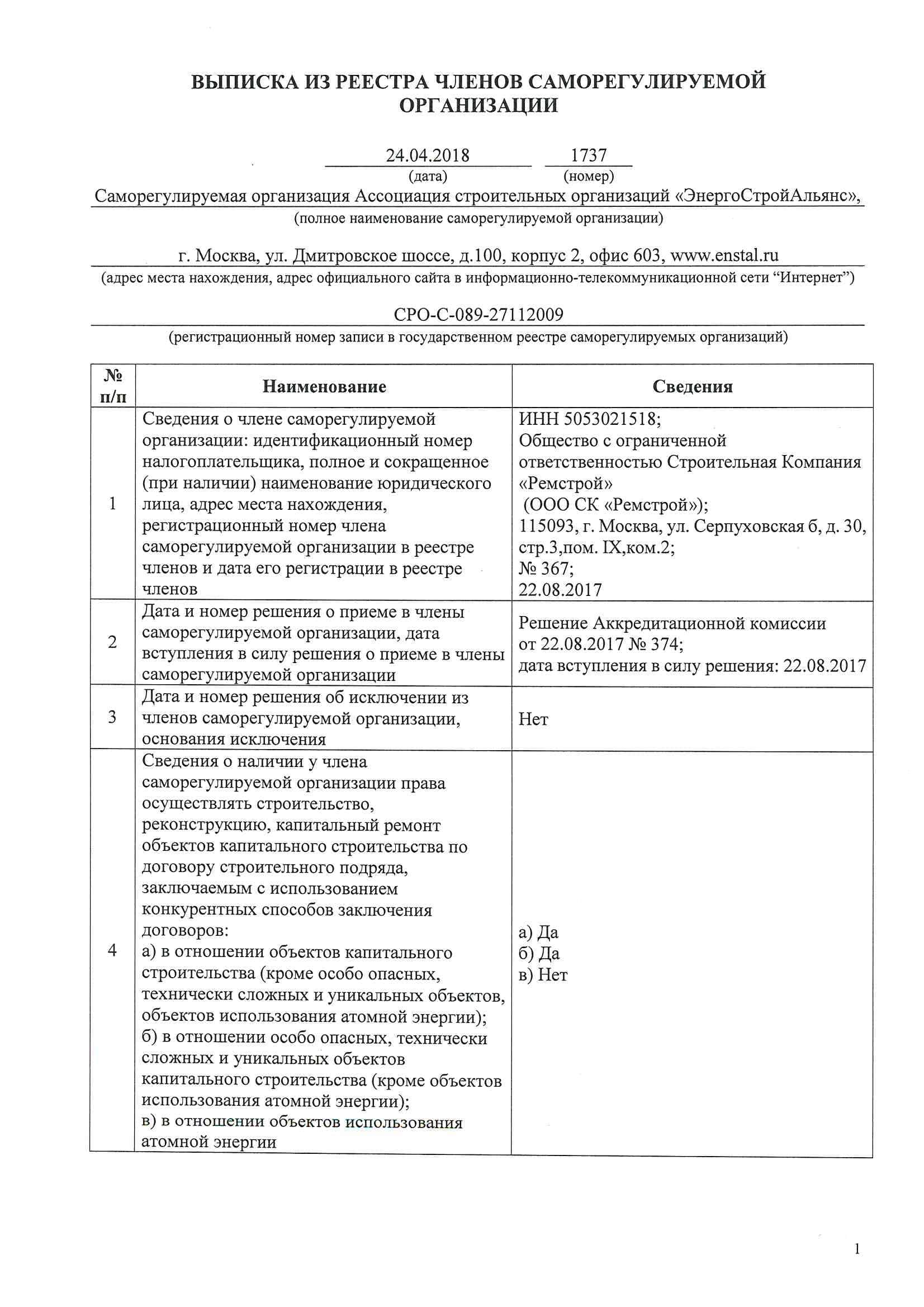
LICENSE OF MINISTRY OF EMERGENCY SITUATIONS
Certificates, system of managing quality.
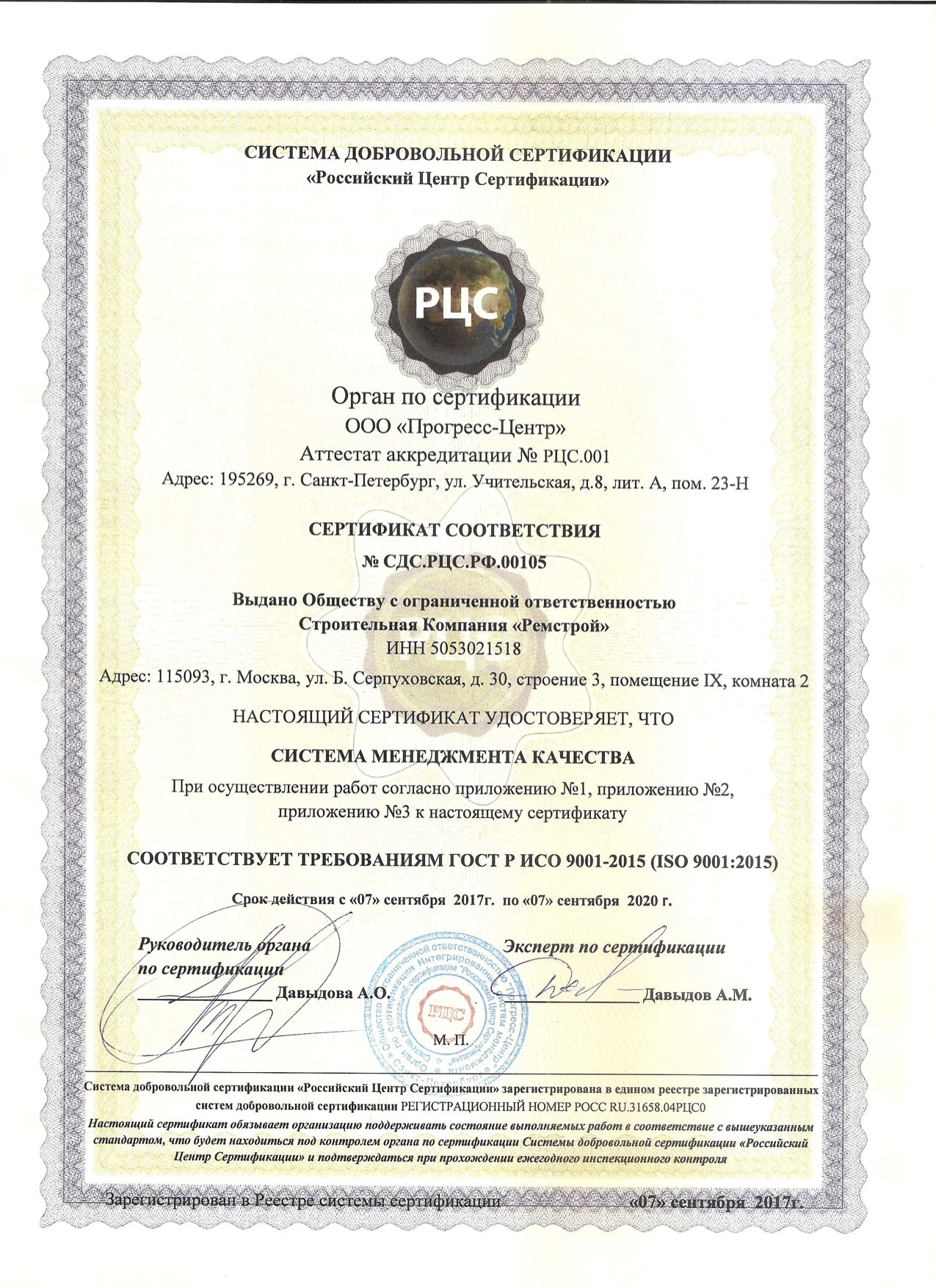
SYSTEM OF ECOLOGIAL MANAGEMENT
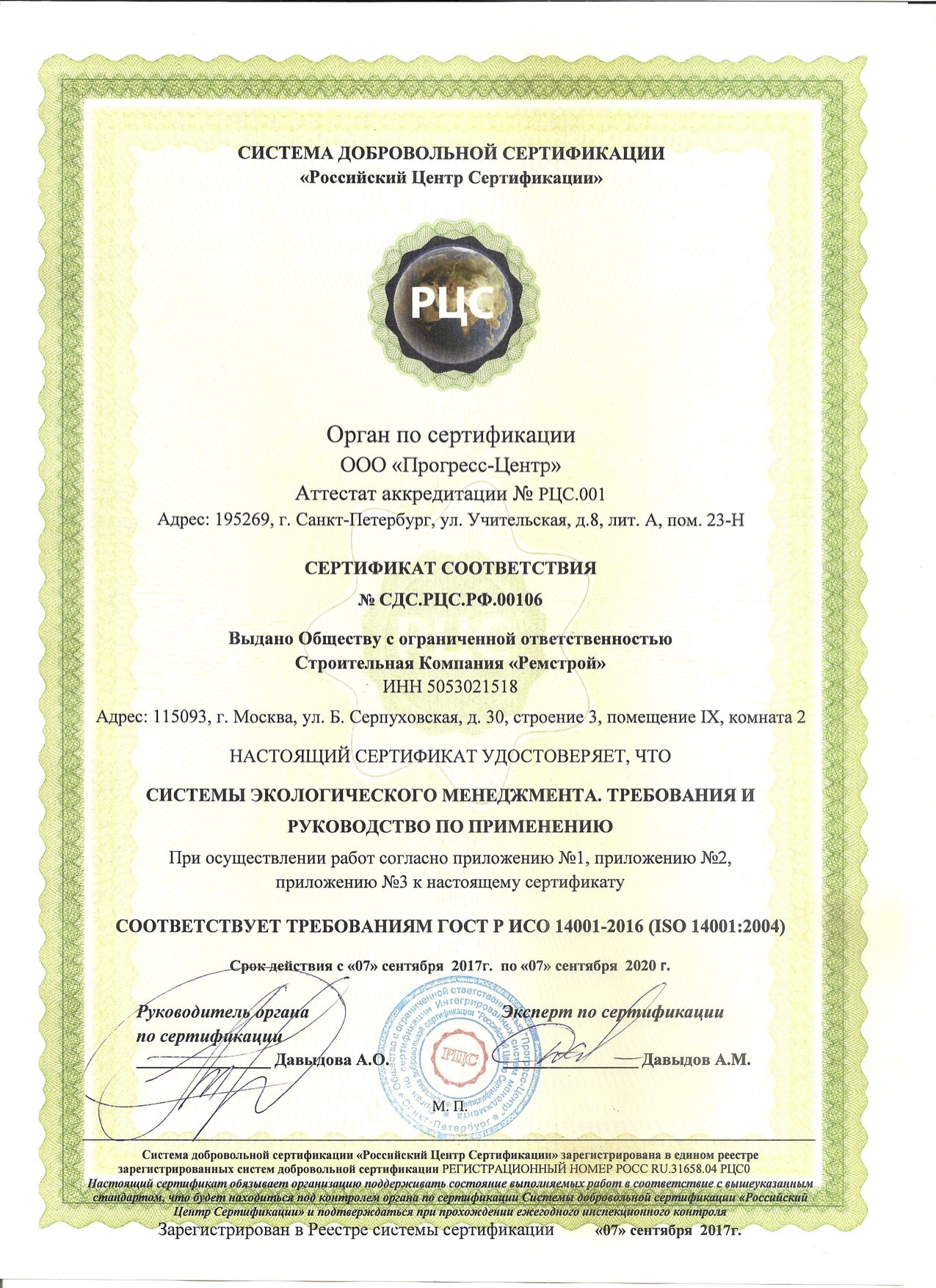
SYSTEM OF OCCUPATIONAL SAFETY AND HEALTH MANAGEMENT
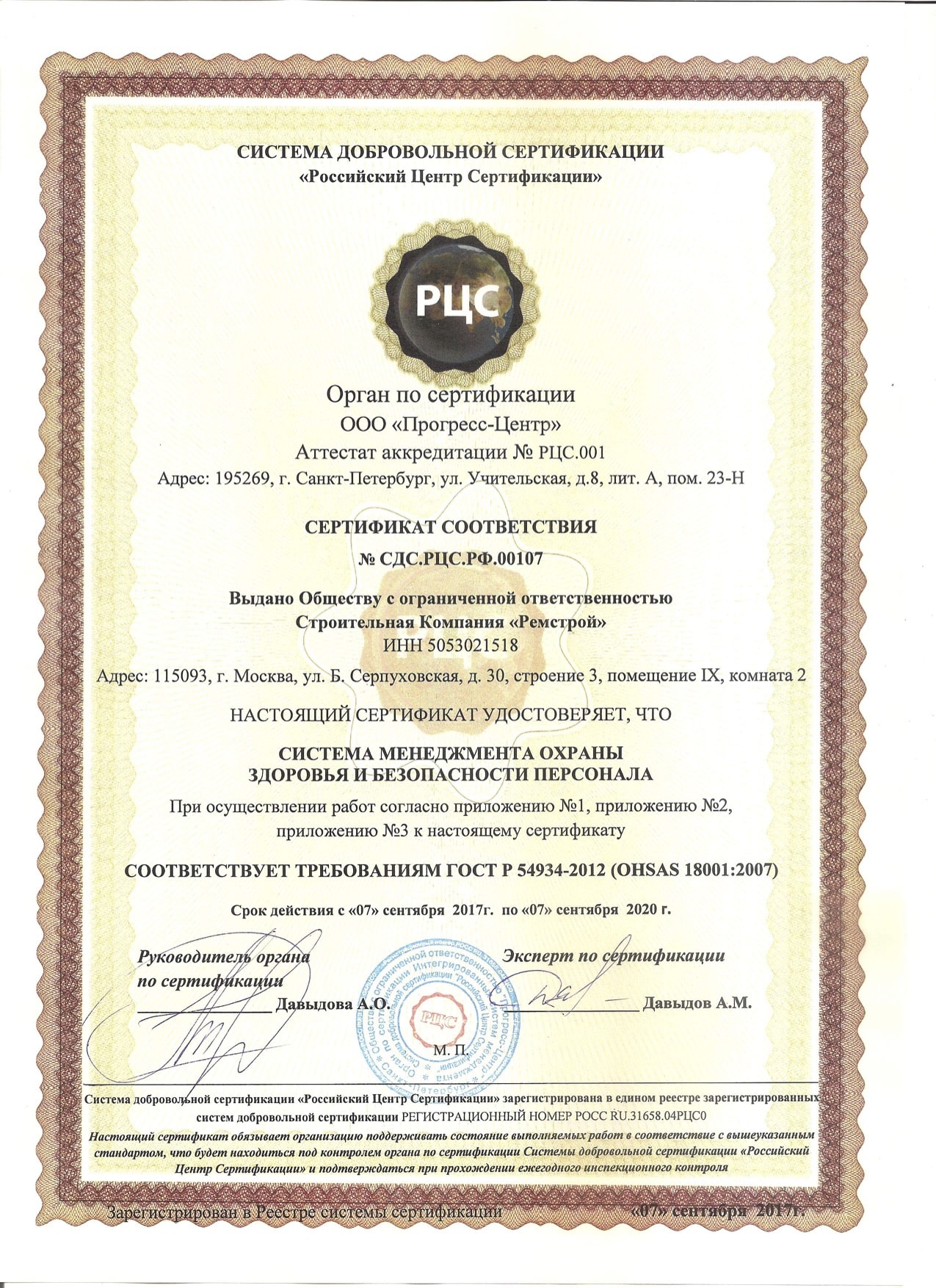
LETTERS OF RECOMMENDATION
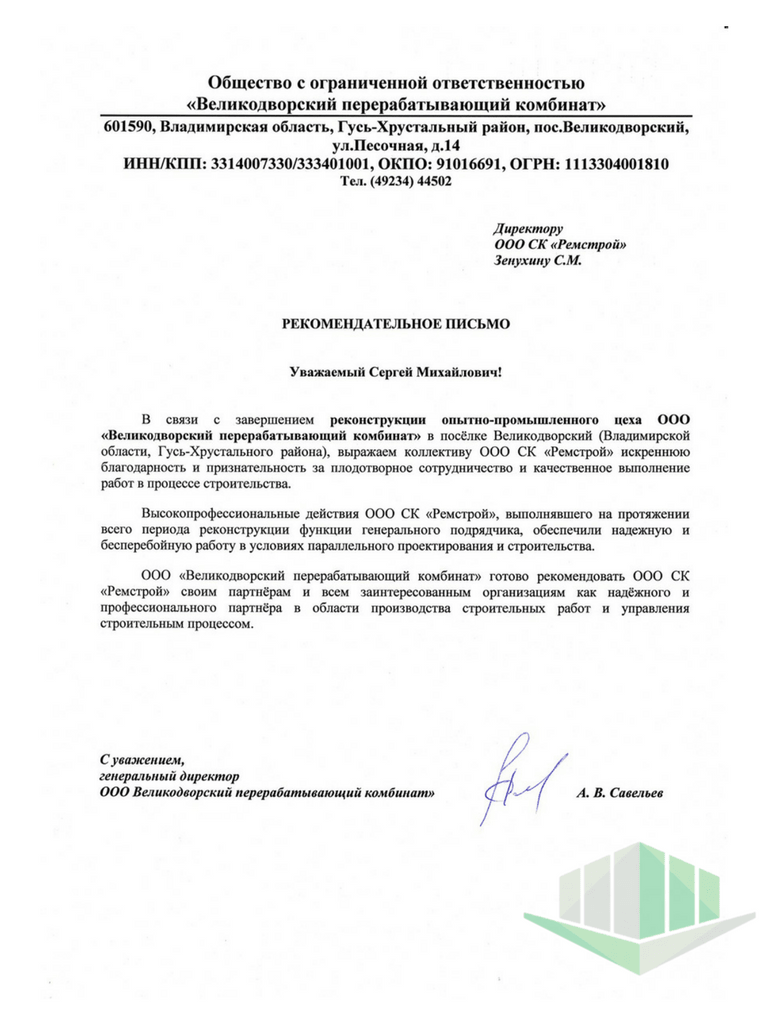
THE GEOGRAPHY OF CONSTRUCTION SITES
YOU CAN FIND MORE INFORMATION ON THE CONSTRUCTION SITES OF OOO REMSTROY ON THE PAGE OF THE SITE
OUR CLIENTS

http://remstroi.pro/yandex-promyshlennoe-stroitelstvo

Greater transparency: No indemnity clause in NPA sale pact between banks and ARCs
M umbai: After year-long negotiations, high-street banks and stressed asset firms last week adopted a 'model agreement' for selling loans, but were unable to reach a meeting point on the tricky issue of 'indemnity' which banks typically refuse to give once sticky assets move out of their books.
Lenders, according to documents reviewed by ET, would also have the right to declare an account as 'fraud' and make asset reconstruction companies (ARCs) that acquired the stressed loan responsible for dealing with the investigative agencies looking into the offence.
Even though a model template settles several differences arising in the course of loan sales, the two issues, pertaining to indemnity and fraud, place selling banks at a comparatively advantageous position.
Lenders, under the aegis of the industry body Indian Banks' Association, on May 17 approved a final draft of the Model Assignment Agreement and Model Trust Deed for adaptation by member banks, financial institutions, finance companies and ARCs, said a note sent to all banks.
The standardised agreement between buying ARCs and selling banks is expected to bring in greater transparency and fair play, said a senior banker involved in the drafting.
ARCs had been nudging banks to offer indemnity even after selling loans to take care of situations where damaging facts, which were not known at the point of sale, surfaced later. However, large banks, unwilling to deal with such eventualities once they wash their hands of an asset, used their influence to scuttle the proposal. Now, the provision of 'indemnity' would be decided on a case-to-case basis between the buyer and the seller. As the model agreement says, "...to be retained or deleted basis mutual agreement between parties, along with the terms thereof."
Over the last few years, selling banks have refrained from giving indemnity on the loans assigned to ARC. Typically, the ARC would want the bank to provide a written commitment that there are no third-party claims on the assets being sold along with the loan or that there are no other legal claims (other than those disclosed) on the asset. "Banks, particularly the large ones, have avoided indemnity by asking ARCs to do proper due diligence before buying it," pointed out a senior person from the ARC industry. "But the fact is that indemnity is required for things not shown to us in due diligence," she added.
The ARC seeks indemnity to protect itself from any unknown claim that may arise after acquiring the loan in its books against full cash payment.
It was also decided that any sharing of liability in the wake of devolvement and invocation of guarantees or any non-fund facilities would depend on the commercial terms agreed between the buyer and seller, and would be kept outside the model agreement.
HANDLING FRAUD ACCOUNTS
On the fraud account issue, the model agreement says that if the selling bank (post the sale of debt to an ARC), receives instruction from any relevant statutory authority to classify the loan as 'fraud', then, notwithstanding the assignment having taken effect, the bank will have a right to declare the loans as fraud on a future date.
The document further adds that after reporting the account as fraud, it will be the sole responsibility of the ARC to monitor and file complaints with law enforcement agencies and proceedings related to such complaints.
If the loan is sold for full cash, it is deemed a 'true sale', and the bank should not have any control over the treatment or resolution of the account.
The agreement says that banks and ARC can mutually decide on the course of action, but banks will have the final right to decide the necessary steps for declaring the account fraudulent.
According to industry estimates, ARCs have acquired nearly ₹10 lakh crore of bad loans from banks since starting operations in 2003.
These loans are acquired against cash or a combination of cash and security receipts (SR), which are securities whose return is linked to the recovery from the underlying loans. The ARCs have issued close to ₹2.85 lakh crore of SRs, and of this, nearly ₹1.5 lakh crore of SRs are redeemed.
For more news like this visit The Economic Times .


- Bahasa Indonesia
- Eastern Europe
- Moscow Oblast
Elektrostal
Elektrostal Localisation : Country Russia , Oblast Moscow Oblast . Available Information : Geographical coordinates , Population, Area, Altitude, Weather and Hotel . Nearby cities and villages : Noginsk , Pavlovsky Posad and Staraya Kupavna .
Information
Find all the information of Elektrostal or click on the section of your choice in the left menu.
- Update data
Elektrostal Demography
Information on the people and the population of Elektrostal.
Elektrostal Geography
Geographic Information regarding City of Elektrostal .
Elektrostal Distance
Distance (in kilometers) between Elektrostal and the biggest cities of Russia.
Elektrostal Map
Locate simply the city of Elektrostal through the card, map and satellite image of the city.
Elektrostal Nearby cities and villages
Elektrostal weather.
Weather forecast for the next coming days and current time of Elektrostal.
Elektrostal Sunrise and sunset
Find below the times of sunrise and sunset calculated 7 days to Elektrostal.
Elektrostal Hotel
Our team has selected for you a list of hotel in Elektrostal classified by value for money. Book your hotel room at the best price.
Elektrostal Nearby
Below is a list of activities and point of interest in Elektrostal and its surroundings.
Elektrostal Page

- Information /Russian-Federation--Moscow-Oblast--Elektrostal#info
- Demography /Russian-Federation--Moscow-Oblast--Elektrostal#demo
- Geography /Russian-Federation--Moscow-Oblast--Elektrostal#geo
- Distance /Russian-Federation--Moscow-Oblast--Elektrostal#dist1
- Map /Russian-Federation--Moscow-Oblast--Elektrostal#map
- Nearby cities and villages /Russian-Federation--Moscow-Oblast--Elektrostal#dist2
- Weather /Russian-Federation--Moscow-Oblast--Elektrostal#weather
- Sunrise and sunset /Russian-Federation--Moscow-Oblast--Elektrostal#sun
- Hotel /Russian-Federation--Moscow-Oblast--Elektrostal#hotel
- Nearby /Russian-Federation--Moscow-Oblast--Elektrostal#around
- Page /Russian-Federation--Moscow-Oblast--Elektrostal#page
- Terms of Use
- Copyright © 2024 DB-City - All rights reserved
- Change Ad Consent Do not sell my data
- Practical Law
New standard document on deed of assignment of beneficial interest in land
Practical law uk legal update 4-591-5405 (approx. 2 pages).

IMAGES
VIDEO
COMMENTS
Indemnity clauses are common in contracts and purchase receipts which are often buried deep in small prints in the form or document. ... The Deed of Assignment acts a main document between the buyer and seller to show proof of ownership in favour of the seller. Read More. Gazette.
When you're drafting a deed of indemnity, it's important that you include these essential elements: 1. Definition and scope. The deed should have a clear definition for every key term used. This includes the liability, claim, and company. As for the coverage, you should choose a deed that can provide unlimited coverage.
The deed of assignment is the main document between the seller and buyer that proves ownership in favor of the seller. The party who is transferring his or her rights to the property is known as the "assignor," while the party who is receiving the rights is called the "assignee.". A deed of assignment is required in many different ...
The deed of assignment in question listed the assets subject to assignment, but was illegible to the extent that the debtor's name could not be deciphered. The court got comfortable that there had been an effective assignment, given the following factors: (i) the lender had notified the borrower of its intention to assign the loan to the ...
NOTES TO COMPLETE THIS DEED To help make it easier to complete this Deed, we've listed notes below and added instruction notes on the deed itself. These are for guidance only and don't form part of the Deed. 1. Date Insert the date on which the deed is completed. Do not backdate or forward-date this deed. 2. Policy Insert the policy number ...
Summary. This new Standard document is for use on an assignment of an unregistered lease. It is suitable for use where: The assignor is assigning the whole of the property demised by the lease. The property is not subject to any underlease (s). The Standard document contains optional clauses that are appropriate in the following circumstances:
This document is from Thomson Reuters Practical Law, the legal know-how that goes beyond primary law and traditional legal research to give lawyers a better starting point. We provide standard documents, checklists, legal updates, how-to guides, and more. 650+ full-time experienced lawyer editors globally create and maintain timely, reliable ...
The form covers the situation of an assignment of a policy by: An absolute owner to another person absolutely, e.g. where no trust is involved. An absolute owner to trustees of an existing trust. Trustees to a beneficiary, to satisfy the interest of the beneficiary in the trust fund, if: the person is a beneficiary under an absolute trust, or.
A Deed of Assignment is a legally binding document that allows one party, known as the assignor (the party relinquishing the rights, benefits, or obligations), to transfer specific rights, benefits, or obligations to another party, referred to as the assignee (the party receiving the assigned rights, benefits, or obligations). ... The indemnity ...
The issue was whether there had been a valid assignment of the right of indemnity to the Company under the ARC. Assignment. When a business is sold, its existing contracts would be vested in the ...
Like assignment, novation transfers the benefits under a contract but unlike assignment, novation transfers the burden under a contract as well. In a novation the original contract is extinguished and is replaced by a new one in which a third party takes up rights and obligations which duplicate those of one of the original parties to the ...
There are only a small number of documents that require execution by way of a deed. These include land transfers, leases, mortgages and charges, sales by a mortgagee, appointments of trustees, powers of attorney, gifts of tangible goods that are not accompanied by delivery, and releases and variations. Failure to follow the relevant statutory ...
Key terms in indemnity agreements include: Names and addresses of the parties. Contract agreement date. Contract recitals and purpose. Exchange of consideration. Scope of coverage. Limitation of liability. Indemnification clause. Indemnification exceptions.
Execution of deeds and documents: In relation to a deed of indemnity, does the indemnified party need to execute the deed in order for it to be enforceable or is it still enforceable if only the indemnifying party executes it? Practical Law Resource ID a-123-0932 (Approx. 4 pages)
INDEMNITY (a). The assignee covenants that, from the date of this deed until the earlier of the term of the lease or until the Assignee is released from the tenant covenant imposed by the Landlord and Tenant (Covenants) Act 1995, it will pay the Rent and any VAT payable on it and observe and perform the Lease Obligations and indemnify the ...
This Deed of Assignment - Assignment of Contract is in Microsoft Word format, written in plain English, easy to use and edit. View Sample. £9.99. Template for a deed of assignment - assignment of contract to buy and download from The Legal Stop. In MS Word, plain English and easy to edit.
SAMPLE Deed of Access and Indemnity. 8.4 Lodgement of information with regulatory body. (a) The Director authorises the Association to provide to the relevant regulatory body the information disclosed under clause 8.2. (b) The Association undertakes that, to the extent that the Director is obliged by law to lodge with a regulatory body the ...
Tämä teos on public domainissa Venäjällä Venäjän federaation 18. joulukuuta 2006 antaman Venäjän federaation IV lakikirjassa olevan lain 230-FZ artiklan 1259 perusteella.. 5 § Tekijänoikeutta ei ole ideoihin, konsepteihin, perusajatuksiin, toimintaperiaatteisiin, menetelmiin, prosesseihin, järjestelmiin, merkityksiin, ratkaisuihin, löytöihin, tietoon ja ohjelmointikoodeihin.
This is an enquiry in relation to the enforcement of restrictive covenants. A sells a property (lets call it "the Land") to B. The transfer includes a covenant by B on behalf of himself and successors in title so as to bind the Land with A (and his successors in title) for the benefit of the retained land not to extend any buildings on the Land ...
2000. Seven years of successful work have shown that combining different types of activities in the same company is not always convenient. And in the year 2000 the founders of OOO Firm ERG decided to create and register a monoprofile construction company OOO Remstroy Construction Company. Industrial construction was chosen as the priority area.
Lenders, under the aegis of the industry body Indian Banks' Association, on May 17 approved a final draft of the Model Assignment Agreement and Model Trust Deed for adaptation by member banks ...
Elektrostal Geography. Geographic Information regarding City of Elektrostal. Elektrostal Geographical coordinates. Latitude: 55.8, Longitude: 38.45. 55° 48′ 0″ North, 38° 27′ 0″ East. Elektrostal Area. 4,951 hectares. 49.51 km² (19.12 sq mi) Elektrostal Altitude.
We have published Standard document, Deed of assignment of beneficial interest in land. This is a deed to assign a beneficial interest in residential property. The document is intended for the use where an individual wishes to make a transfer/assignment of their share in the equitable estate of a residential property. If you have any comments ...
In 1938, it was granted town status. [citation needed]Administrative and municipal status. Within the framework of administrative divisions, it is incorporated as Elektrostal City Under Oblast Jurisdiction—an administrative unit with the status equal to that of the districts. As a municipal division, Elektrostal City Under Oblast Jurisdiction is incorporated as Elektrostal Urban Okrug.